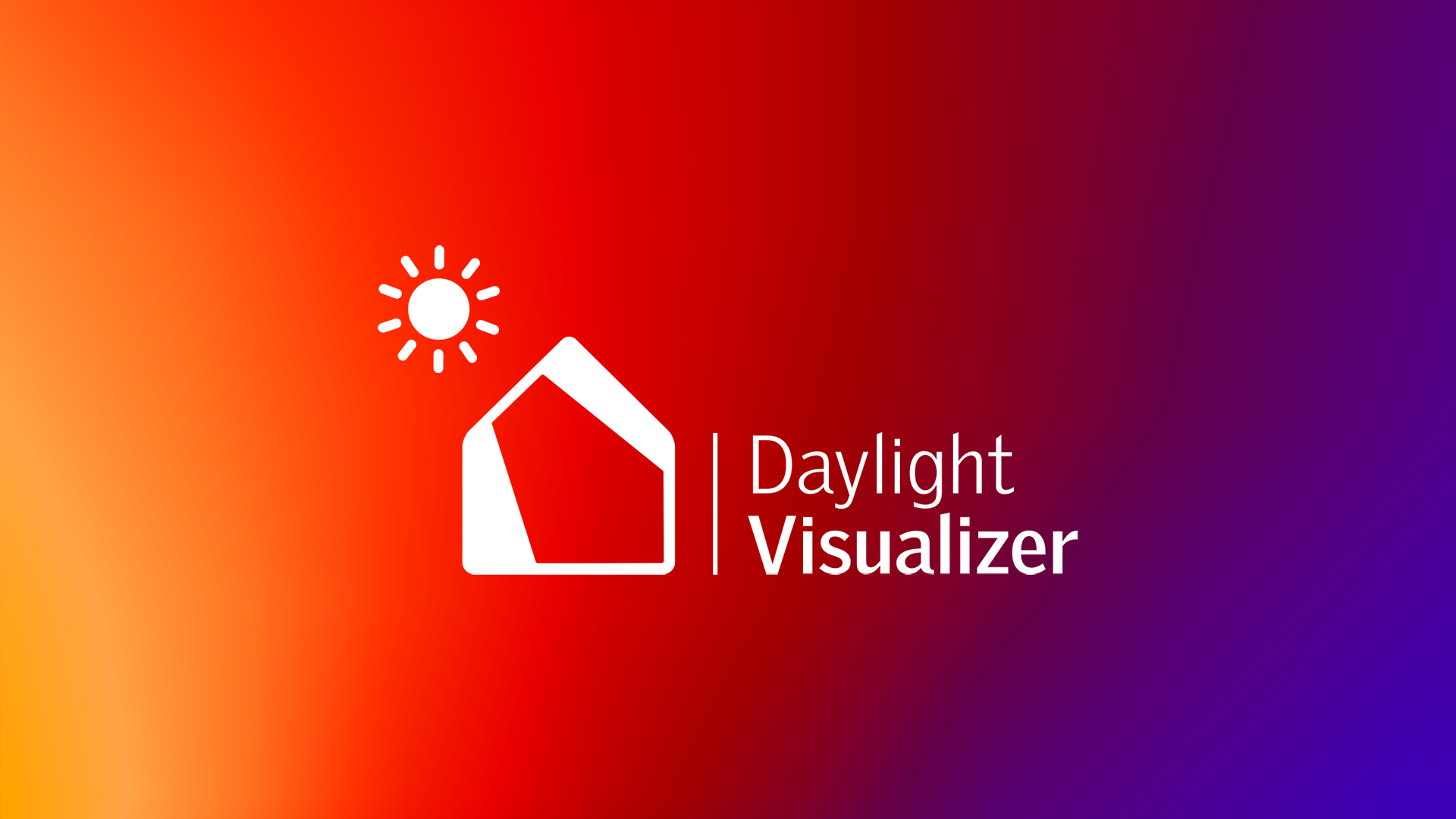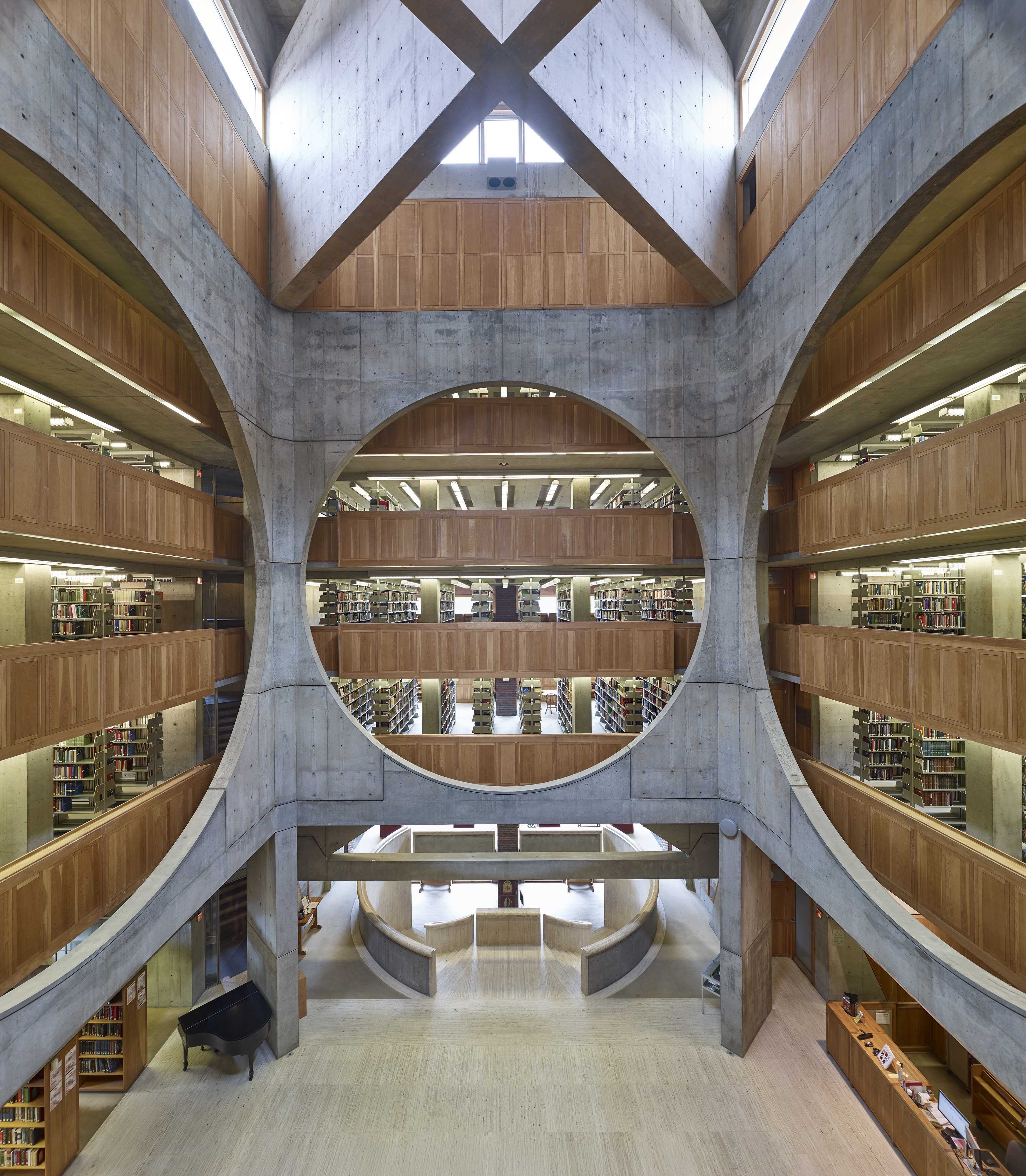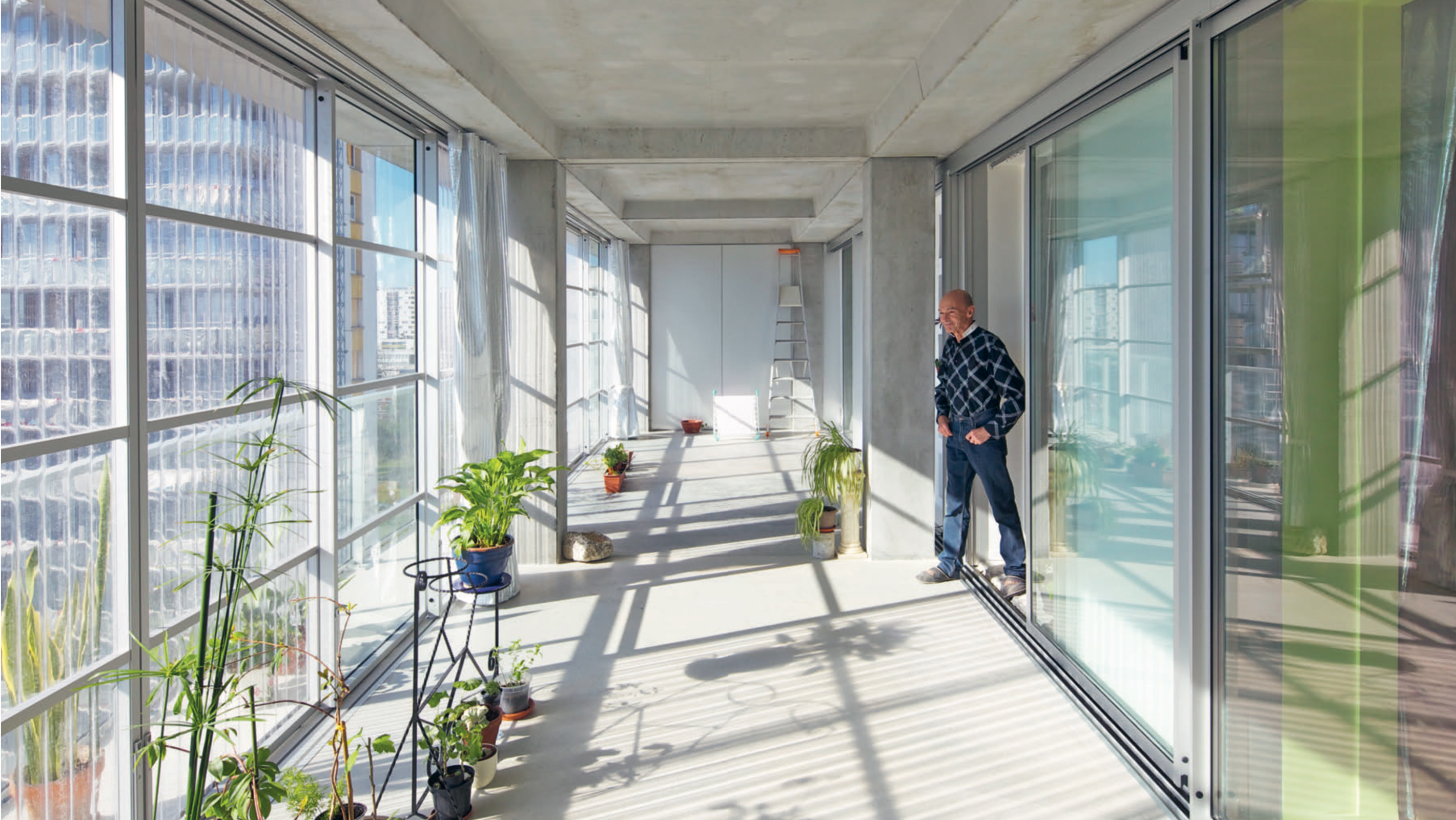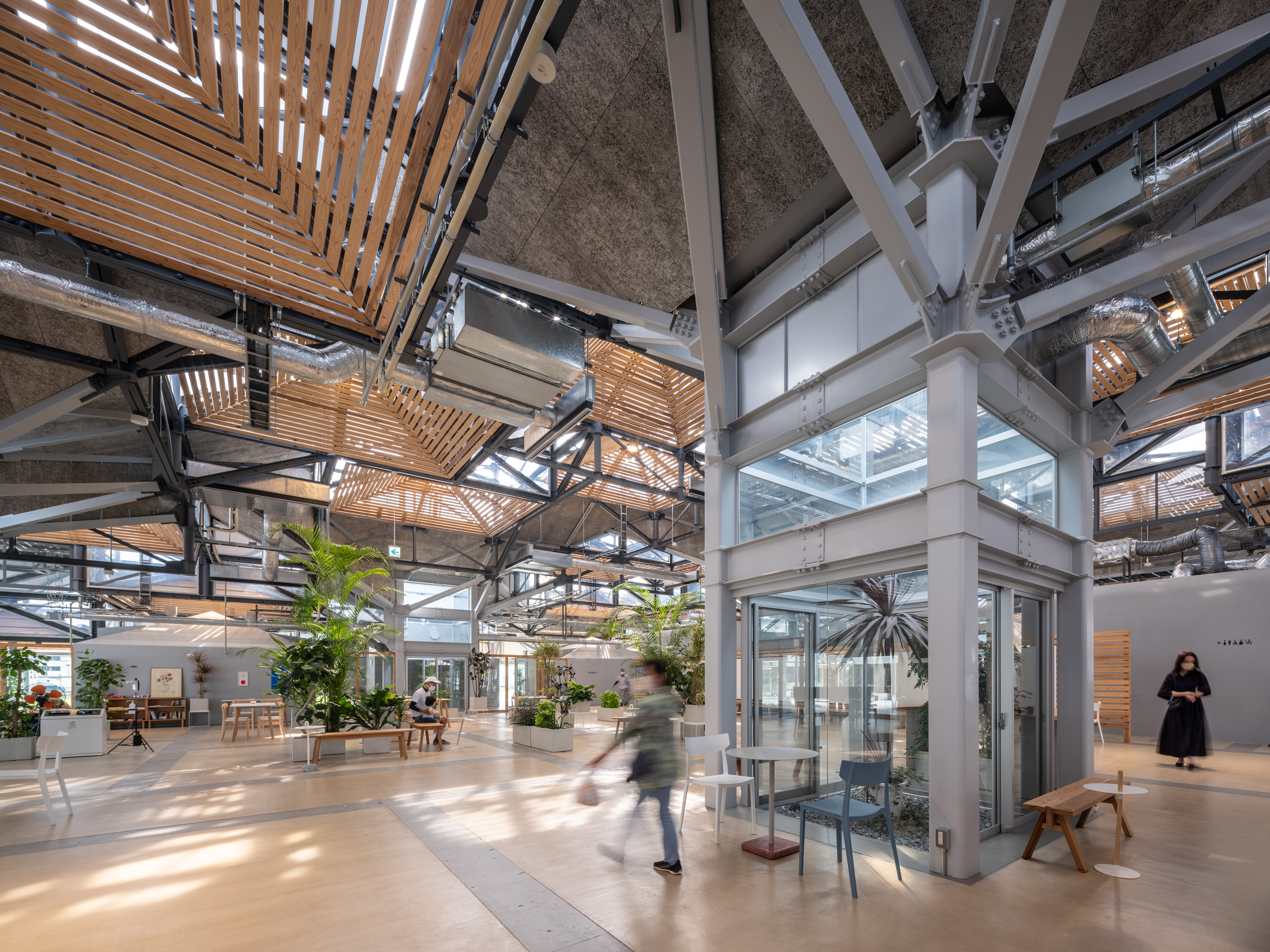Climate-based daylight simulations with VELUX Daylight Visualizer
Category
Daylight & Architecture
Tools and Certification
Author
Nicolas Roy
Date
Dec 2022
Source
Daylight Visualizer
Share
Copy
Daylight is core to realizing healthy and sustainable buildings, but its dynamic nature and the complex ways in which it interacts with its environment make it a difficult discipline to master. The new version of VELUX Daylight Visualizer makes climate-based daylight modeling more accessible than ever, empowering architects to make the best use of daylight anywhere in the world.
Climate, latitude, orientation, building site context and building design all have a large influence on the amount and distribution of daylight in interior spaces.
Up until recent years, it has been common to use the daylight factor (DF) method to evaluate daylight availability in buildings. It is a well-established method which has been around for ages, but also one that does not account for the full complexity of daylight hereby omitting the effects of orientation, direct sunlight and local climatic conditions.
With climate-based annual daylight simulations we can now account for all these important factors and achieve a much more accurate prediction of daylight performance in buildings. To put it in simple terms – we go from performing one simulation under overcast sky for the daylight factor – to simulating all daylight hours of the year using recorded climatic data to accurately represent the light from sky and sun at each hour.


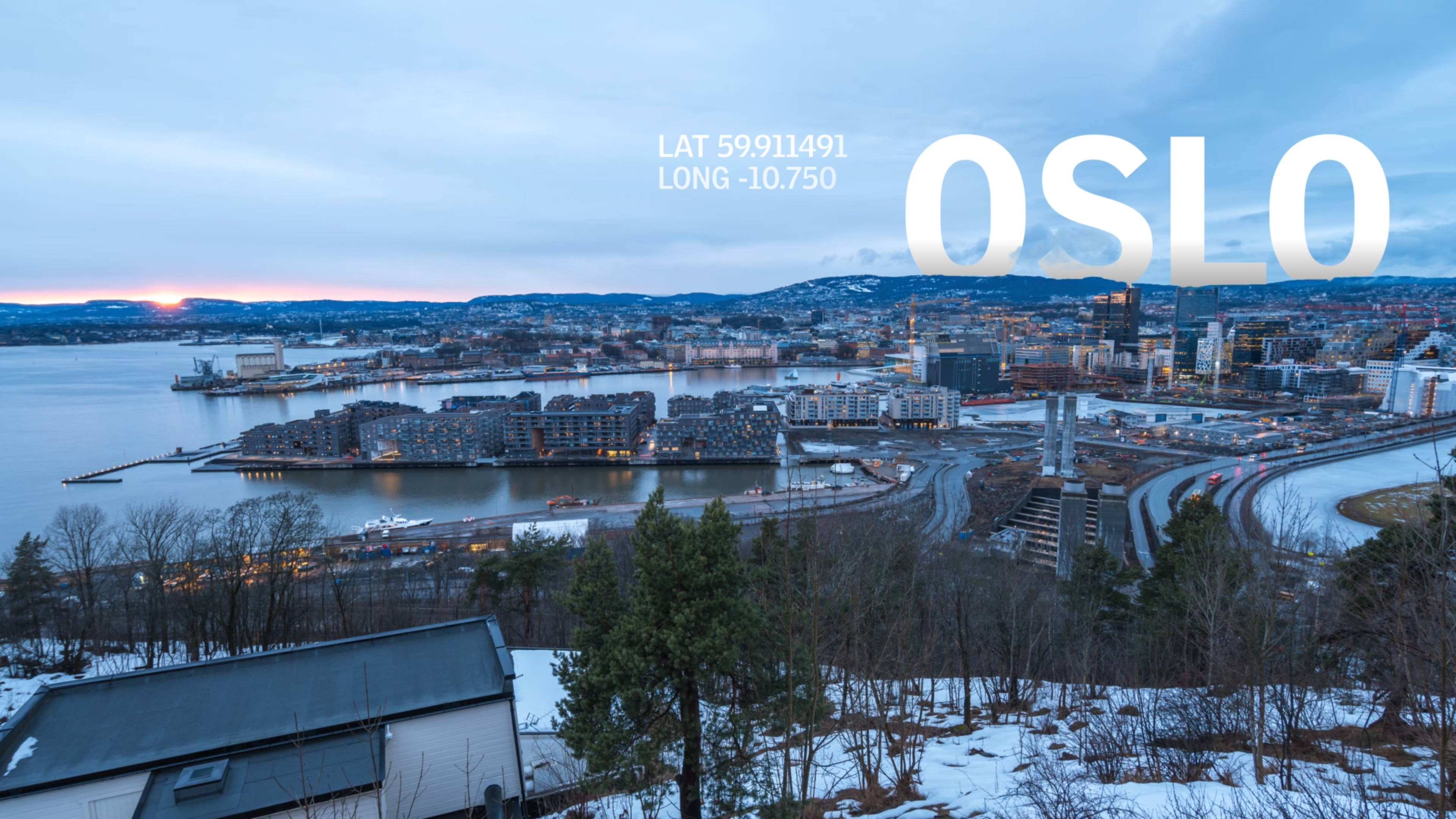
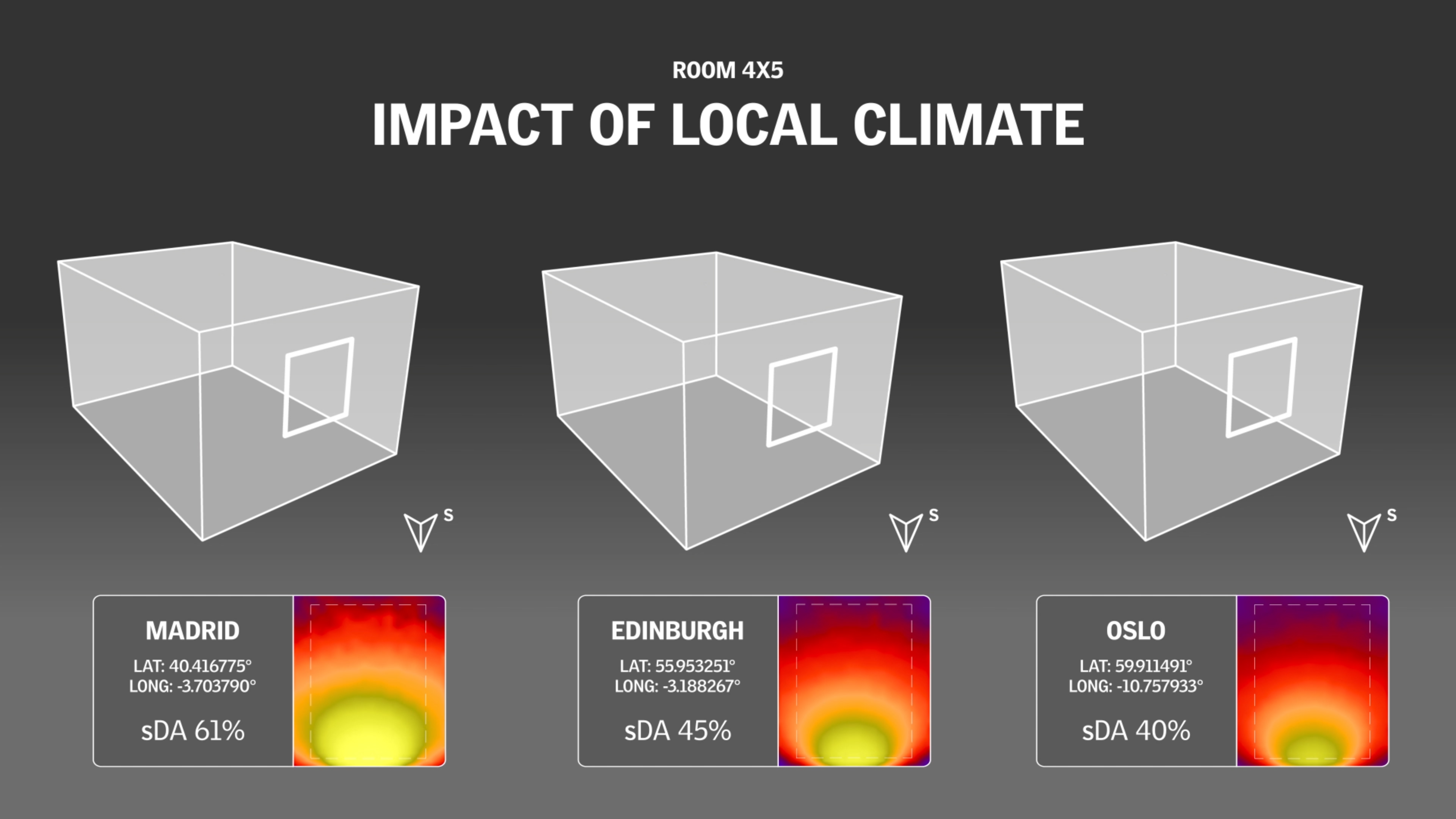
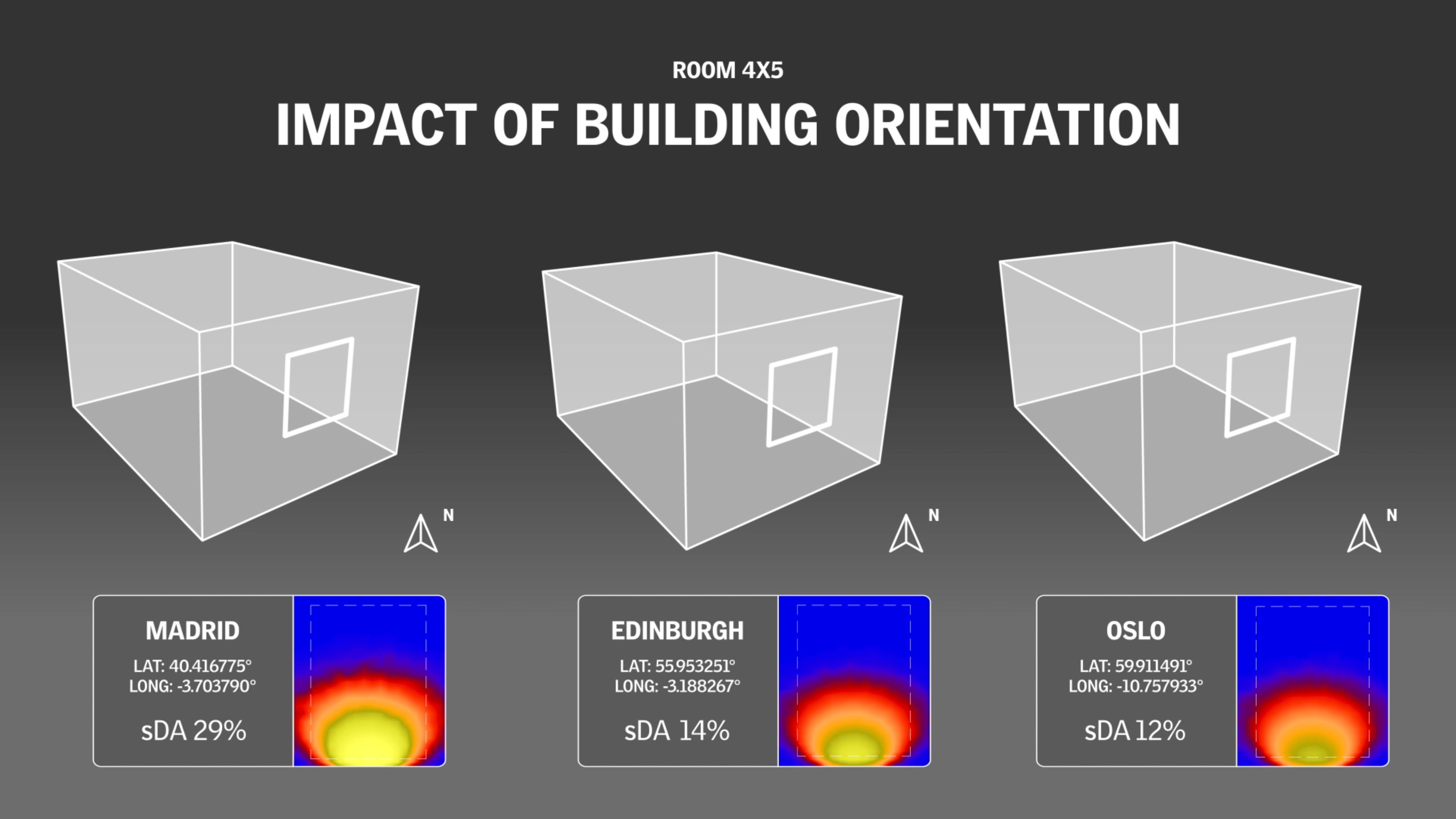
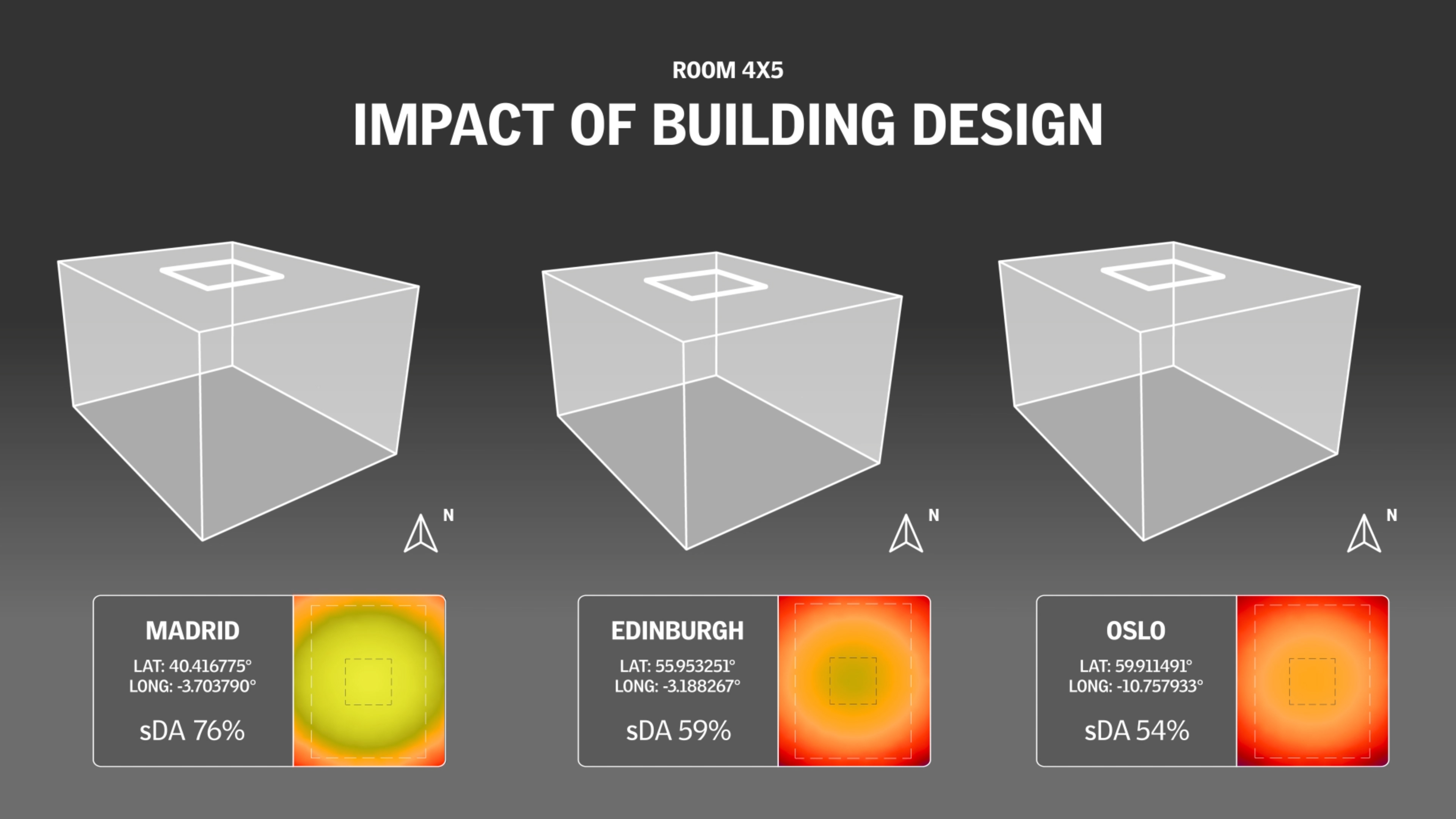
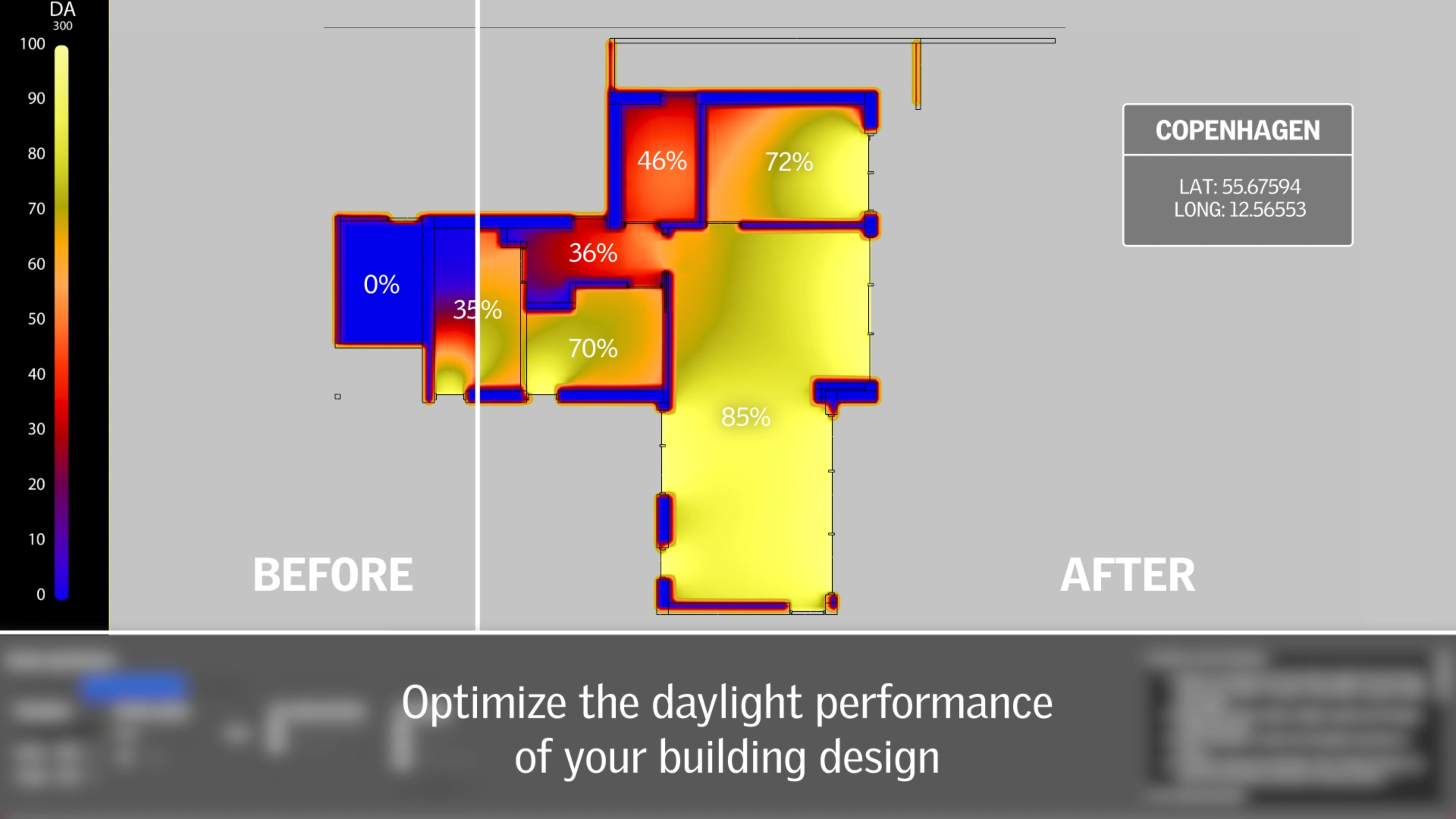
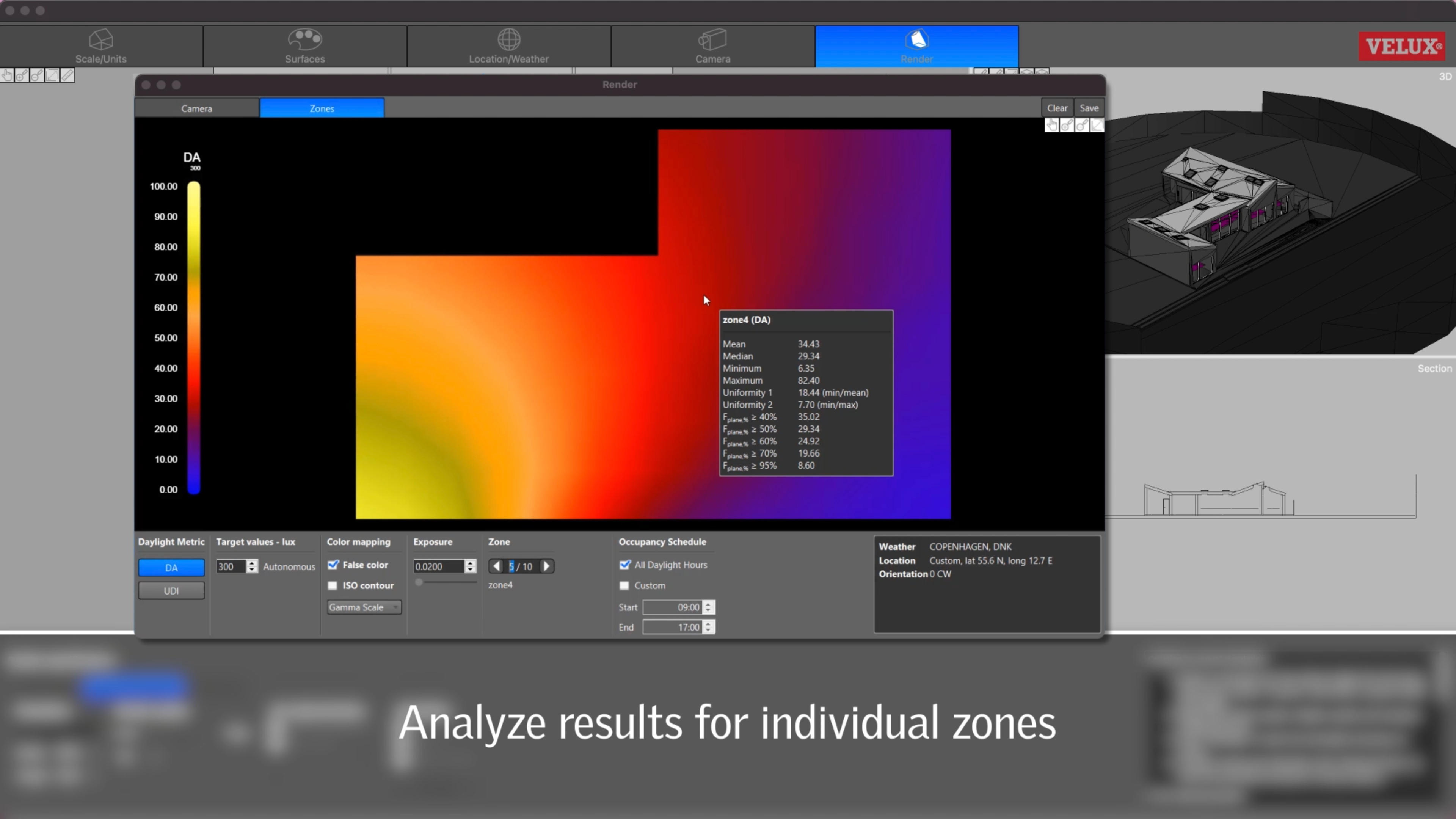
In addition to the currently available metrics for single point in time simulations – luminance – illuminance – and daylight factor – the new version of VELUX introduces three new metrics for climate-based annual simulations.
Daylight autonomy (DA): Daylight autonomy (DA) is a daylight availability metric that corresponds to the percentage of the occupied time when the target illuminance at a point in a space is met by daylight. A target illuminance of 300 lux and a threshold DA of 50%, means that 50% of the time daylight levels are above or equal to the target illuminance. Spatial daylight autonomy (sDA) is a daylight autonomy metric which includes a fraction of the space as part of the requirements. For example, in the European standard for daylight in buildings (EN 17037), 50% of the work plane area needs to achieve 300 lux for 50% of daylight hours during the year.
Useful daylight illuminance (UDI): Useful daylight illuminance (UDI) is a daylight availability metric that corresponds to the percentage of the occupied time when a target range of illuminances at a point in a space is met by daylight. Daylight illuminances in the range 100 to 300 lux are considered effective either as the sole source of illumination or in conjunction with artificial lighting. Daylight illuminances in the range 300 to around 3 000 lux are often perceived as desirable.
Total annual illumination (TAI): Total annual illumination (TAI) is a measure of all the visible daylight energy incident on a surface during the year, or occupancy period evaluated.
The intuitive user interface of Daylight Visualizer makes it easy to create simple 3D models from scratch within minutes with the embedded modeler and let you import existing projects from your preferred BIM/CAD software in any level of details.
We have a lot of tutorials showing how to use Daylight Visualizer on our YouTube channel VELUX BIM & Building Simulation Tools.


